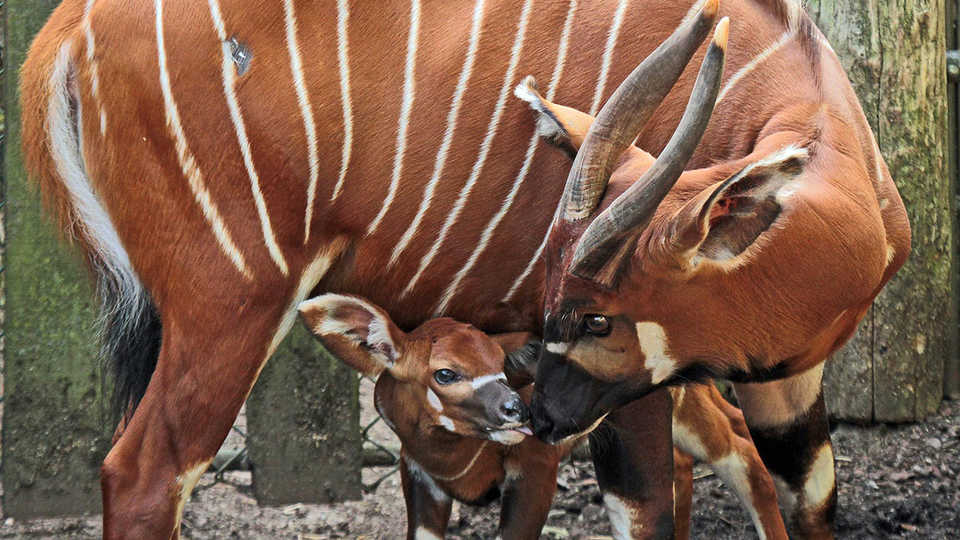In this craft activity, students will:
- learn about the structure and purpose of antelope horns.
- construct a headband modeling a pair of antelope horns.

© JokeKok
With just a few supplies from home, you can make a twisty set of bongo antelope horns in a heartbeat. Construct a headband while you consider the structure and purpose of horns!
In this craft activity, students will:
With the help of images and the following analogies, compare an antelope to other familiar horned creatures, such as goats, sheep, and cows, and contrast an antelope with common antlered creatures, such as deer and moose.
As you tie on headbands for the students, ask questions such as:
Many types of horns are simple to construct. A small toilet paper roll and a longer paper towel roll work well for twisty horns, which are found on the bushbuck and the bongo. Short horns like those of the steinbok, klipspringer, and dik-dik are easy to cut out using folders or thin cardboard, and one can even make long, thin oryx horns. Consider breaking students into ‘herds’ with different horns -- a charming way to create manageable field trip groups! In this case, have students write the name of their representative antelope across their headband.
horn: the bony part growing atop the head of animals like antelope
herd: a group of hoofed animals, such as zebra, antelope, and giraffes
Found on the heads of antelopes, sheep, goats, and cattle, horns are made up of a bony core covered by a hard tissue called keratin. Keratin is the protein that forms fingernails, hair, and feathers. Horns are permanent, growing throughout an animal’s life, so one can often use horn size to guess an animal’s age. Horns come in different shapes; some are long and pointy, others are heavy, curving spirals. Some are smooth, and others have a corkscrew texture.
Although it varies by species, both males and females can have horns. If horns are really long and sharp, they might help an antelope fight against a lion or a leopard, but most antelope have smaller horns. Antelopes use horns to push others out of their territory, but they don’t use them as weapons. Instead, when antelopes fight, they put their heads down, entangle their horns, and have a pushing war. In this way, antelope sparring is similar to arm wrestling.
By contrast, the antlers of animals like deer, moose, and elk are soft and fuzzy, have a branching shape, and are grown and shed each year. Rather than for protection, antlers are used almost exclusively for defending resources, such as territory and mates. Because this responsibility falls on the male deer, you won’t find headgear on the females – another difference between deer and antelope.
Kindergarten
Physical Sciences
Life Sciences
Grade One
Visual and Performing Arts: Visual Arts